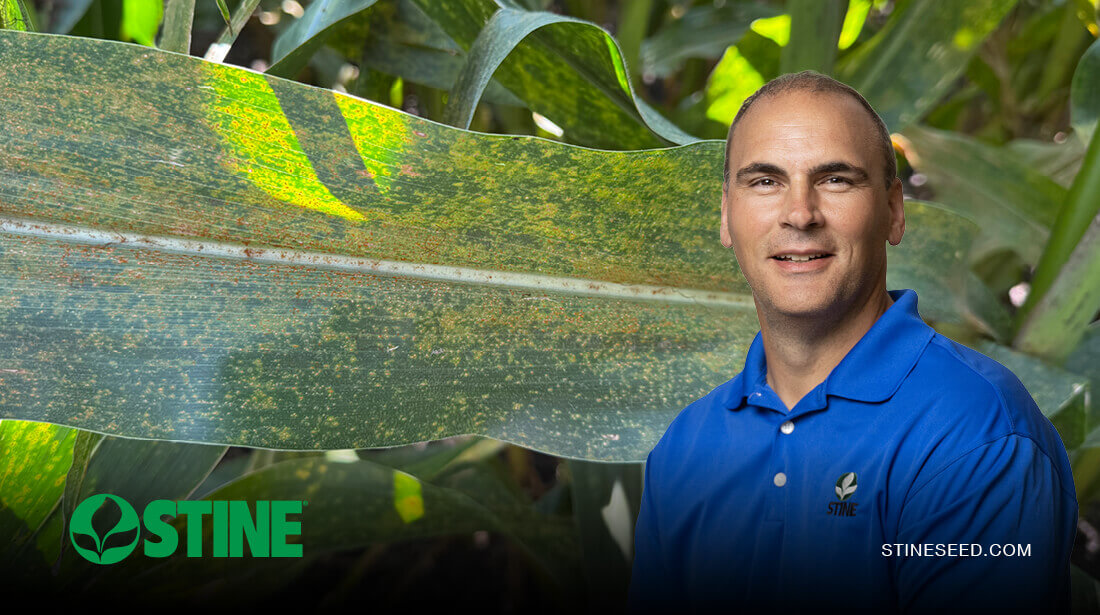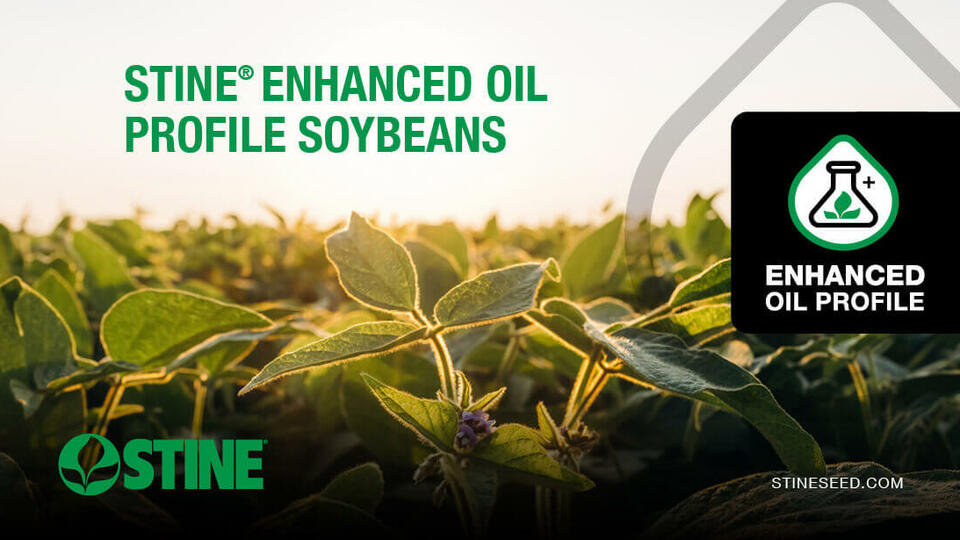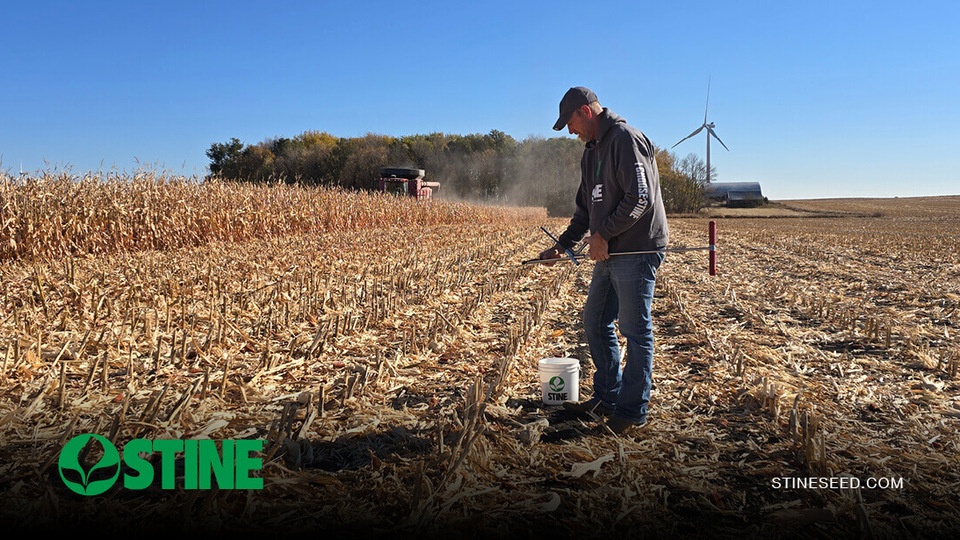A combination of storms from the South and higher daytime and evening temperatures this growing season resulted in southern rust moving into areas of the Corn Belt. From Iowa and Illinois to Minnesota and South Dakota, widespread reports of southern rust are being confirmed.

“Southern rust is a fungal disease that’s blowing in by southern prevalent winds,” says Brian Hartman, national corn product manager for Stine® Seed Company. “If you look back at this season, we had a lot of storm systems that came up from the South that really brought a lot of moisture and a lot of winds with it. They blew those spores up to the northern areas, and they took off running.”
As growers continue to navigate southern rust this fall, here are a few things we know about the disease.
- It reproduces fast. According to Hartman, southern rust reproduces every 7–10 days. “The speed of reproduction is just rapid, and it’s faster than any other disease that I’m aware of,” he notes. For example, tar spot and gray leaf spot typically reproduce every 14–21 days. This means once southern rust hits, it spreads quickly!
- It can be misdiagnosed as common rust. “The key identifier of southern rust is that it’s very dense on the leaf; it’s got bright orange pustules, whereas common rust is kind of a dark brick red pustule, and it’s not nearly as dense,” Hartman says.
The Crop Protection Network recommends sending plant tissue samples to an accredited diagnostic lab to confirm the disease, as distinguishing common rust from southern rust can be difficult. A correct diagnosis can help determine the best management strategy. - Scouting early and often is key. The disease’s rapid reproduction is what really sets southern rust apart, and how it affects the leaves of infected plants can greatly impact photosynthesis. “If southern rust moves into fields today, there will be little economic loss,” notes Hartman. “But, if it moved in around tassel, because of its reproduction rate, the speed in which it spreads is important to keep in mind.”
This is why it’s critical to scout fields early and often if conditions are favorable for the disease. It may not be in your field one week but could appear the next. Throughout the growing season, keep a close eye on any areas showing leaf discoloration. At harvest, be on the lookout for signs of stalk rot linked to southern rust. A quick pinch test is an effective way to assess standability and identify which fields should be prioritized for harvest. - Timely fungicide applications can help. Hartman notes that fungicides with dual modes of action are the most effective method to keep southern rust at bay, but timing is crucial. “With fungicides, you might get 14–21-days’ worth of protection,” he says. “But if you think about the reproduction rate of the disease, it may require a few passes to keep up.”
For most growers, it’s likely too late for a fungicide this year. In future years when the disease is present, it’s important to target fungicides around tassel, and it may require multiple applications throughout the growing season to keep pace with the disease’s reproductive cycle. - There’s a silver lining (for the Corn Belt). Fortunately for growers in the Corn Belt, southern rust does not overwinter. This means conditions would have to be just right for the disease to move north again next year.
Because no two growing seasons are ever the same, it’s difficult to predict whether southern rust will pose a problem in 2026. However, by understanding how the disease spreads and recognizing the early signs, growers can stay ahead of it in seasons when it threatens the Midwest and northern states.
Get more tips and information about southern rust in this week’s episode of the “Stine Seedcast,” as Hartman sits down with host David Thompson for a more in-depth conversation on the disease and how growers can prepare now through harvest and get ahead of it in the future. Listen to the full episode wherever you get your podcasts or watch it on Stine’s YouTube page.
Related Articles
-

Use Stine’s XP® seed treatments to prevent early injury to your crops
December 2025 in Agronomy
-

Understanding Stine’s enhanced oil profile soybeans
December 2025 in Agronomy
-

Soil sampling sets the stage for spring
November 2025 in Agronomy
-

Corn production growth paves way for more high-performing Stine® hybrids
November 2025 in Agronomy



